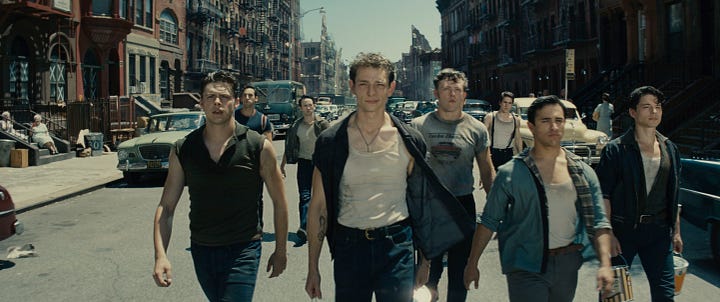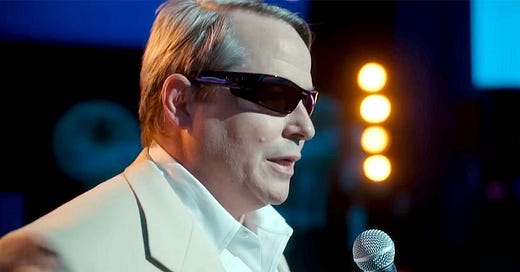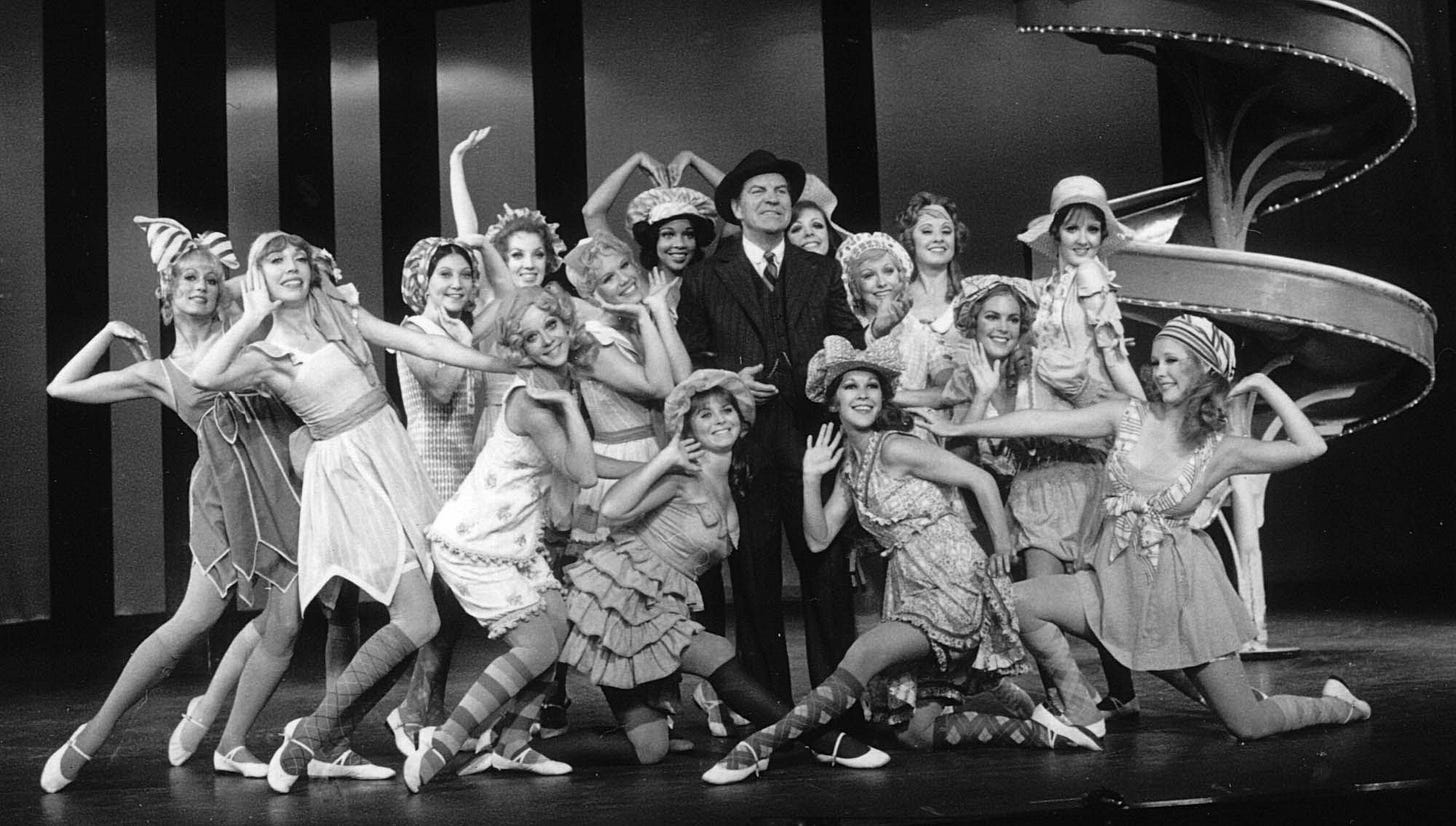No More Villains Anymore
Was Jerry Herman's Mack and Mabel the blueprint for Matthew Broderick's Richard Sackler in the Netflix series Painkiller?
Thank you for taking the time to check out the Jason Ward Creative Substack talking about all things cultural. This week after watching Netflix series Painkiller and listening to Jerry Herman’s Mack and Mabel I was inspired to take a look at how we write and respond to villains. It seems we can forgive people who do bad things but we find it hard to engage with characters who are just horrible - but why? I hope you enjoy the piece and I would love you to subscribe to The Jason Ward Creative Substack and help support my work. Subscription is currently free and there are over 70 articles, interviews, reviews, playlists and podcasts to enjoy. Many Thanks
The Guardian recently ran a piece about the lack of villains in movies. What they really meant was that our understanding of good vs evil is no longer as binary as it was. When the good guys and gals in real life turn out to be bad it causes an imbalance and opens up a huge grey area where anyone could be a baddie. Cops, medical staff, movie directors, the military, journalists, and business people have all lost the public’s trust. So when we see classic villain like the Joker we just think ‘this guy has nothing on Sackler!’
And Richard Sackler is a good case in point. From the outside he seems like a pretty unpleasant man who happily made billions from selling what was essentially heroin to poor people. This lack of normal human concerns is not unusual among some Corporate Executives but it makes it hard to feature them as protagonists which has become obvious in two excellent recent TV series about the US Opioid Crisis. Both Dopesick on Disney+ and Painkiller on Netflix came up against the same problem - the person is so terrible that the audience ends up disinterested and turned off.
In musical theatre and pantomime playing a villain is great fun because the devil really does get the greatest tunes. Our villains tend to have some redeeming feature which is often a comedy song - think Master of the House or Poor Unfortunate Souls - which allows us to enjoy their bad side without feeling uncomfortable. The humour also keeps us engaged with the character because, frankly, who wants to listen to someone miserable and nasty for 2 and a half hours?
There can also be characters that do bad things. Sweeney Todd undoubtedly does terrible things. But despite the fact that he decapitates men in order to process them as meat for pies and even discusses with his accomplice, Mrs Lovett, the difference in taste and texture of the meat from different professions, we stick by him. We are engaged by his depravity because we learn about his suffering and feel that he has a good reason, revenge, to act this way. He really is the little guy trying to stick it to the man but in a brutal and bloodthirsty way.


In West Side Story the villains are the Police. Despite the fact that the main characters are all violent street criminals who think nothing of beating and stabbing people we see the forces of law and order as getting in the way of not only what the kids want to do but what they could be. In most stories the hoodlums would be the villains and the Police would be the heroes coming in to restore and preserve order. But, as in Sweeney, we feel empathy with the Jets and Sharks despite their violent acts. When Tony, who was the leader of the Jets, sings Something’s Comin’ early on he lights up our sympathetic social worker feelings as we recognise that this street kid has some kind of artist’s vision about how his life could be.
Audiences clearly have a large capacity for forgiveness! They even fall in love with the Phantom who hangs a stagehand, operates a protection racket and has some kind of potentially non-consensual sexual relations with Christine. In real life we might say ‘Look I’m sorry that you got disfigured but you can’t go around hanging people, being sexually creepy and scaring the beJesus out of everyone….. but hey Music Of The Night!
Netflix’ Painkiller has a different type of challenge. In Sweeney, West Side Story and Phantom we feel that there is a good person that has been forced to do bad things by someone or something even worse. In Painkiller there is no external evil force driving Richard Sackler’s wrongdoing. The series attempts to push the blame for wrongdoing on the fact that Matthew Broderick’s Sackler was having some kind of hallucinatory relationship with his late uncle. This is at best an ambitious idea and at worst an immature concept that doesn’t resonate. But the writers and the audience need a strong reason to justify the hideous behaviour and character.
And this is a challenge that Painkiller shares with, of all things, Mack and Mabel! Jerry Herman’s show has some of the most glorious music ever written for the stage and is set in the so called Golden Age of silent cinema. It tells the story of a twisted love affair between Director (Dictator?) Mack Sennett and actress Mabel Normand. The times are changing as silent movies are replaced by talkies which sets whole new audience expectations and requires a different set of talents from casts and creatives. Just like the setting for Painkiller there is lots here to work with and two characters based on real people
But here’s the rub. Just like the character of Sackler, both Mack and Mabel are just not likeable people. Mack is a domineering heartless man - who even has a song (I Won’t Send Roses) about his lack of romantic inclinations whereas, in real life, Mabel had a cocaine and heroin dependency and was accused of murdering a lover. Despite all the glorious big musical numbers that surround the plot, the essential challenge remains: that we have to sit through a story about two people that we ultimately care little about. Just like Sackler, they appear, they show how terrible they are, then Mabel becomes a heroin addict, is accused of murder and dies - THE END.
Mack and Mabel is not the toughest or most challenging story to ever have been told on stage. Painkiller, on the other hand, is examining one of the most horrific episodes in US history, but both are hamstrung by the same challenge of having unlikeable lead characters.
We need our villains to be unlikeable because we also need to feel that they will either change their ways and become good people or meet their comeuppance - hopefully at the hands of the hero! When this doesn’t happen the audience ends up feeling numb or cheated. We have been conditioned to believe that no bad deed goes unpunished.
Matthew Broderick’s performance as Richard Sackler is very strong but the character starts off as a nasty, aggressive and considerably wealthy man and finishes as a nasty, aggressive and considerably wealthier man. Sackler has no obvious character arc and apparently has no sense of remorse at the millions of lives his product has damaged or destroyed. He is a barren wasteland of emotions just slightly more believable than Dr Evil and a whole lot less entertaining.
As an audience we want to know ‘Why are we spending so much time with this horrible person?’ The question for the creative is ‘How do I write about a truly horrible person without making my audience switch off?’ The answer in Mack and Mabel is to surround the darkness with a whole bunch of big bold Broadway musical numbers. The answer in Painkiller is to drive the story through the eyes of a much more sympathetic character - the fictional Edie Flowers. It is arguable that a similar device could have worked in Mack and Mabel - think Into the Woods or Jospeh.
In both Painkiller and Mack and Mabel the audience is left feeling a little empty. It’s like we have eaten a huge Cheesecake Factory portion that looked delicious on the plate and had all the right high sugar content to give us a rush but was ultimately unsatisfying. Nutritionally the cheesecake was empty and leaves us feeling bloated and dramatically Painkiller leaves us feeling the same way - in fact in both cases we might even feel a little angry at our powerlessness.
But maybe this is the point of both stories. The villains don’t always find redemption or get shot. Criminals are not always brought to justice and good guys and girls are sometimes shapeshifting villains in disguise. In Mack and Mabel, there is a song towards the end of the show called “I Promised You A Happy Ending” which is wrapped up in a dream sequence in an attempt to deliver the kind of redemption that is expected of musical theatre. In it Mack imagines a reconciliation with Mabel and maybe the happy ending that the show’s audience wanted. But it doesn’t work because Mack is not that guy - he has already spent the whole show telling us about the lack of romance in his soul!
The ending of Painkiller is even more cynical but perhaps more honest. When Sackler is having another hallucinatory conversation with his dead uncle he is accused of losing the company $4.5bn. He replies that the money will be paid with standard earning from interest and dividends so will end up costing Purdue nothing. Sackler says that this is the best result possible because he needs to neither take responsibility or lose money.
The truth is that there are real people in the world who behave in this way. Anyone who has worked in a large corporation will have witnessed cut throat and energy sapping battles that achieve nothing for customers, clients and audiences. You might have heard about the importance of adding those extra percentage points to profit margins by ‘tightening belts’ and growing margins and realised that the benefits earned from the action do not accrue to you. While theatre, TV and film needs to show us the bad people that live among us it also needs to show us the uncomfortable truth that they nearly always get away with the bad things they do.
This uncomfortable truth is part of a bigger story that connects Mack Sennett and Richard Sackler. Both are powerful wealthy men who are products of a systemic corporate way of behaving that values victory and self preservation above collaboration and caring. By shining a light on these unlikeable characters, writers also have a chance to explore and explain the system that produces them. And maybe it is the system that is the biggest villain!

“I promised you a happy ending but in light of current circumstances and unforeseen disruption in the global economic landscape there are certain aspects of our processes and operations that will need to adapt to the reality on the ground. By taking these steps early and smartly we will be able to protect our organisation, our people and our partnerships with our valued customers, enabling us to plan for stronger, and more sustainable growth moving forward”
OR
I promised you a happy ending but I lied.
Please don’t have nightmares and thank you for reading!
I hope you enjoyed this piece. Please feel free to check out all the articles, interviews, podcasts and playlists available on The Jason Ward Creative Substack. Subscription is currently free and it would be wonderful to welcome you in. Many Thanks Jason
Check out the See no evil: Why have baddies vanished from our cinema screens? Bu Alex Hess in The Guardian





